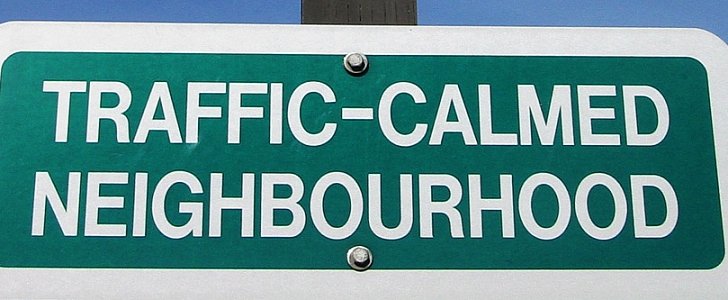Waze, the popular navigation app that is owned by Google, has managed to upset American homeowners for the second time since it was launched. At first, Waze outraged residents in California, and the locals were dissatisfied with the fact that the app used residential streets as detours for its users.
At the time, the homeowners made headlines for their “battle” with Waze, which eventually failed and faded away from the attention of the media and the public.
This time, we are writing about a street in Maryland that used to be quiet, but became busy once road construction works nearby moved traffic onto Elm Avenue.
Tim Connor, a resident of the Elm Avenue, wants Waze and Google to “forget” his quiet residential street and re-route its users through somewhere else. Like his counterparts in California, Connor signed up for a free Waze account and started making false reports about various issues on his street.
Naturally, it worked for a few minutes, until several users passed through nevertheless, and then his false reports were removed from the app.
Eventually, Tim Connor’s Waze account was banned because of repeated false reports. He tried reporting accidents, traffic jams, and other issues on his streets. Waze’s algorithm first tells users that were routed on the road to avoid the area, but those who pass and deny the reports make the app rethink directions. The method described above is how crowdsourced navigation apps work, in layman’s terms. Because of this, false reports do not work.
As Washington Post reports, Connor even tried placing additional signs on the street, including two plastic figures of children. One of them was stolen, while the other was run over by a driver rushing to get to work on time. Obviously, Connor is upset, and wants Waze and Google to stop sending so many cars down his street, which used to be traveled mostly by people walking their dogs, cyclists, and roller-skaters.
Now, Tim Connor claims he timed cars driving on his street, and says a vehicle passes every two seconds. The leap from a quiet residential street to this level of traffic is concerning, and we agree that Mr. Connor’s street is one rushed and inattentive driver away from a disastrous accident.
Unfortunately for the residents of Elm Avenue and similar streets, Waze and Google have no reason to stop guiding its users on quiet residential roads, as long as the route is faster than the main avenues. Even if the apps listen to the request, the street will never be the same, as drivers might have already memorized the shortcut and could use it regardless of the navigation app’s recommendations.
This time, we are writing about a street in Maryland that used to be quiet, but became busy once road construction works nearby moved traffic onto Elm Avenue.
Tim Connor, a resident of the Elm Avenue, wants Waze and Google to “forget” his quiet residential street and re-route its users through somewhere else. Like his counterparts in California, Connor signed up for a free Waze account and started making false reports about various issues on his street.
Naturally, it worked for a few minutes, until several users passed through nevertheless, and then his false reports were removed from the app.
Eventually, Tim Connor’s Waze account was banned because of repeated false reports. He tried reporting accidents, traffic jams, and other issues on his streets. Waze’s algorithm first tells users that were routed on the road to avoid the area, but those who pass and deny the reports make the app rethink directions. The method described above is how crowdsourced navigation apps work, in layman’s terms. Because of this, false reports do not work.
As Washington Post reports, Connor even tried placing additional signs on the street, including two plastic figures of children. One of them was stolen, while the other was run over by a driver rushing to get to work on time. Obviously, Connor is upset, and wants Waze and Google to stop sending so many cars down his street, which used to be traveled mostly by people walking their dogs, cyclists, and roller-skaters.
Now, Tim Connor claims he timed cars driving on his street, and says a vehicle passes every two seconds. The leap from a quiet residential street to this level of traffic is concerning, and we agree that Mr. Connor’s street is one rushed and inattentive driver away from a disastrous accident.
Unfortunately for the residents of Elm Avenue and similar streets, Waze and Google have no reason to stop guiding its users on quiet residential roads, as long as the route is faster than the main avenues. Even if the apps listen to the request, the street will never be the same, as drivers might have already memorized the shortcut and could use it regardless of the navigation app’s recommendations.

